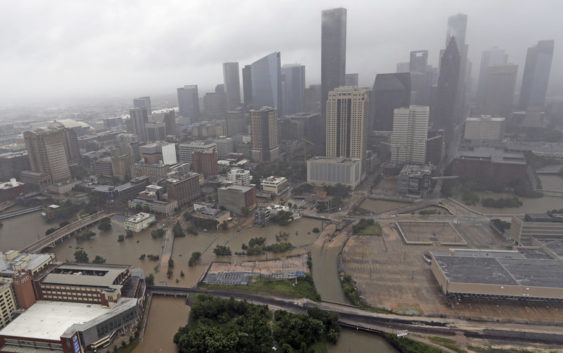- Seven months after Hurricane Helene, Chimney Rock rebuilds with resilience
- Wildfire in New Jersey Pine Barrens expected to grow before it’s contained, officials say
- Storm damage forces recovery efforts in Lancaster, Chester counties
- Evacuation orders lifted as fast-moving New Jersey wildfire burns
- Heartbreak for NC resident as wildfire reduces lifetime home to ashes
Hurricane Harvey Had Lasting Health Effects On Houston Residents, Study Says

Downtown Houston flooded by rain from Hurricane Harvey on Aug. 29, 2017.
Chemicals released after Hurricane Harvey may have lasting health effects, according to an ongoing study from Baylor College of Medicine’s Center for Precision Environmental Health.
Cheryl Walker, the center’s director, told Houston Matters that the study comes in response to concern in the community.
“There was concern on the part of the community about what they might have been exposed to as a result of the floods,” she said. “So, because we had those contacts with the community and we’re a group that was prepared to address those, we were able to get out in the field very rapidly.”
Walker says the study began immediately after Harvey and is now almost complete. It used health questionnaires and personal monitoring devices to help study the long term health effects of the flood, from allergic reactions to mental health.
So far, the study has found that what people see in their homes may not be the best predictor of who will be adversely affected. Instead, Walker said that changes in individuals’ microbiomes were better at predicting adverse reactions than people reporting mold in their homes.
According to the study, things like stress and diet also may have an effect.
“One of the main exposures that had an impact on health was stress,” Walker said. “It was very interesting to see how people across the Houston area responded to that stress and who is still feeling the effects.”
Walker emphasized that the study is not yet complete and that they are still studying the specific impacts of these exposures.